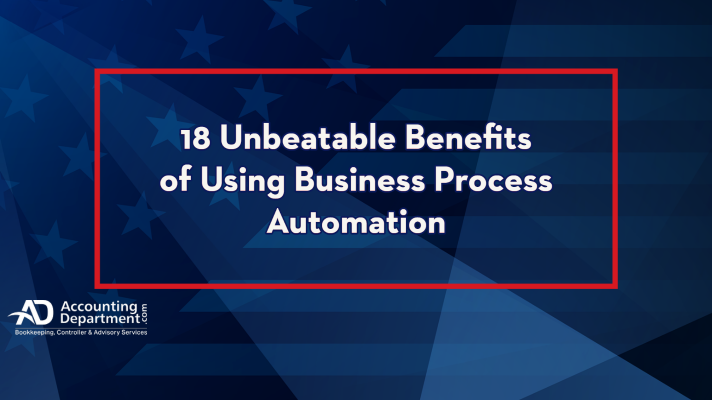Business Process Automation (BPA) is used for operations in production workflows, accounting systems, data management, customer service processes, and even sales funnel coordination. Forms of BPA have become indispensable in industries such as manufacturing, banking, telecom, shipping, stock trading, food production, and many others. NetSuite is a software solution that offers many superior benefits for businesses that make the transition to automated processes. Let’s look at some of the many benefits of switching to business process automation and moving away from manual processes.
What Is BPA and What Does It Do?
Business Process Automation is the use of technology to perform or facilitate a process. From basic automated recordkeeping to advanced functions like inventory tracking, payroll processing, and marketing lead qualifying. NetSuite offers various dynamic software solutions for automating tasks to support an expansive range of objectives and methods.
Automation has replaced seemingly countless manual processes so that workers do not need to repeat tasks or forget steps. Business Process Automation helps many thousands of modern companies ensure consistency to maintain efficiency, quality standards, and regulatory compliance.
18 Major Benefits of Business Process Automation (BPA)
There is little comparison between the competitive potential of companies that do and do not take advantage of opportunities for automation in their operations. Some of the BPA benefits organizations can obtain for their stakeholders include:
- Improves efficiency – Eliminates redundancy and other wasted steps.
- Increases productivity – Streamlines processes for faster completion of work.
- Reduces cost – Increases efficiency without increasing labor, or allows labor reductions.
- Raises morale – Improves the employee experience by freeing people to use core skills.
- Reduces fines – Helps regulatory compliance and conformance with audit requirements.
- Reduces errors – Simplifying systems helps increase the accuracy of steps and records.
- Promotes collaboration – Eliminates frustrations and encourages innovation.
- Promotes agility – Streamlined work increases freedom for creative problem-solving.
- Reduces attrition – Enables matching workers with tasks that suit their skill sets.
- Improves planning – Greater process transparency enables more accurate insights.
- Reduces necessary lead time – Refines processes for faster outcomes.
- Improves service – Increases access to workers for internal and external customers.
- Minimizes waste – Maximizing efficiency eliminates waste of time, energy, and materials.
- Increases visibility – Empowers all stakeholders to understand the workflow process.
- Improves consistency – Ensures that process steps are performed correctly every time.
- Increases quality – Greater consistency and morale naturally lend to improved quality.
- Reduces risk – Organizing processes reduces confusion that can compromise safety.
- Increased customer satisfaction – The above improvements lend to happier customers.
How Can Lack of Automation Impact Profitability?
So many business processes can be automated to reduce costs, increase quality, help ensure compliance, and improve competitiveness. Continuing with outmoded manual processes is fraught with all the old typical problems. Business leaders struggle to prevent costly regulatory violations. Branding is difficult. Waste is rampant. Employee turnover is high. Customer confidence is low. Repeat sales are low. Performance metrics reflect major operational issues. Profitability may be at risk.
In today’s business environment, market share and growth potential are predictably limited for companies that do not rely on automation to the extent possible.
What Kinds of Business Processes Can Be Automated?
Support functions, which are secondary tasks, are often ideal for automation. These are processes that support the core business functions that directly advance the company’s mission. But, many core functions can be automated too, depending on the business type.
Some common examples of BPA applications include support functions such as:
IT Services: Automated systems updates, maintenance, security checks, programming, backups, helpdesk ticket processing, status reports, and other auto-systems facilitate IT.
Logistics: Automated inventory management, packaging, labeling, shipping, tracking, delivery notifications, communications, and workflow processes are the standard today.
Administrative Management: From receivables to payroll, to mail processing, to fleet management, to switchboard operation, and so much more, automation is preferred.
Maintenance: Automated maintenance workflows have revolutionized this area of business support, allowing full transparency for internal customers across departments.
Financial Management: The vast majority (reportedly around 80 percent) of business accounting and finance management departments are using or plan to use automation.
Human Resources: HR uses BPR for recruiting, hiring, onboarding, self-training, benefits management, personnel development tracking, portal management, and more.
Customer Service: Beyond merely retrieving purchase history and payment information, automation is used to manage the customer service workflow.
Marketing and Sales: Managers use automated emailing, lead processing, price estimates, sales funnel tracking, communications scheduling, reporting, and more.
Automation is Imperative for Many Businesses
The purpose of automation is to free employees from redundant tasks for activities that utilize their core skills directly to serve the company’s mission. Companies that utilize BPA can be expected to outpace those that do not, in terms of productivity, quality control, cost management, talent retention, strategic planning, and many other critical functions.
Today, most business processes can be automated to some extent, and many can be virtually entirely automated. NetSuite software currently offers among the world’s best options for helping ensure continued competitiveness and the ability to meet goals for growth.





